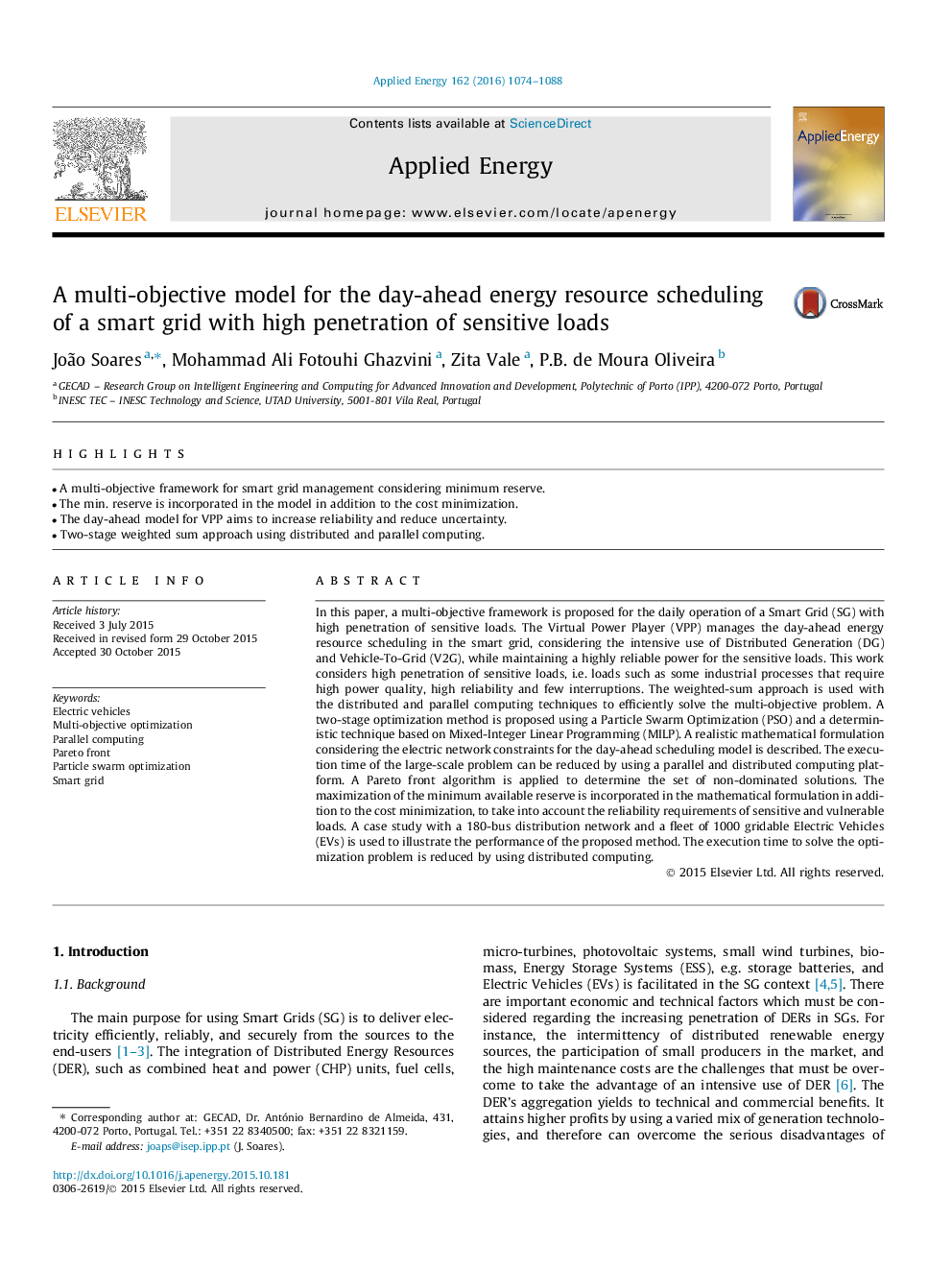| کد مقاله | کد نشریه | سال انتشار | مقاله انگلیسی | نسخه تمام متن |
|---|---|---|---|---|
| 6684903 | 501865 | 2016 | 15 صفحه PDF | دانلود رایگان |
عنوان انگلیسی مقاله ISI
A multi-objective model for the day-ahead energy resource scheduling of a smart grid with high penetration of sensitive loads
ترجمه فارسی عنوان
یک مدل چند هدفه برای برنامه ریزی منابع انرژی روزانه یک شبکه هوشمند با نفوذ زیاد بارهای حساس
دانلود مقاله + سفارش ترجمه
دانلود مقاله ISI انگلیسی
رایگان برای ایرانیان
کلمات کلیدی
وسایل نقلیه الکتریکی، بهینه سازی چند هدفه، محاسبات موازی، پارتو جلو، بهینه سازی ذرات ذرات، شبکه هوشمند،
موضوعات مرتبط
مهندسی و علوم پایه
مهندسی انرژی
مهندسی انرژی و فناوری های برق
چکیده انگلیسی
In this paper, a multi-objective framework is proposed for the daily operation of a Smart Grid (SG) with high penetration of sensitive loads. The Virtual Power Player (VPP) manages the day-ahead energy resource scheduling in the smart grid, considering the intensive use of Distributed Generation (DG) and Vehicle-To-Grid (V2G), while maintaining a highly reliable power for the sensitive loads. This work considers high penetration of sensitive loads, i.e. loads such as some industrial processes that require high power quality, high reliability and few interruptions. The weighted-sum approach is used with the distributed and parallel computing techniques to efficiently solve the multi-objective problem. A two-stage optimization method is proposed using a Particle Swarm Optimization (PSO) and a deterministic technique based on Mixed-Integer Linear Programming (MILP). A realistic mathematical formulation considering the electric network constraints for the day-ahead scheduling model is described. The execution time of the large-scale problem can be reduced by using a parallel and distributed computing platform. A Pareto front algorithm is applied to determine the set of non-dominated solutions. The maximization of the minimum available reserve is incorporated in the mathematical formulation in addition to the cost minimization, to take into account the reliability requirements of sensitive and vulnerable loads. A case study with a 180-bus distribution network and a fleet of 1000 gridable Electric Vehicles (EVs) is used to illustrate the performance of the proposed method. The execution time to solve the optimization problem is reduced by using distributed computing.
ناشر
Database: Elsevier - ScienceDirect (ساینس دایرکت)
Journal: Applied Energy - Volume 162, 15 January 2016, Pages 1074-1088
Journal: Applied Energy - Volume 162, 15 January 2016, Pages 1074-1088
نویسندگان
João Soares, Mohammad Ali Fotouhi Ghazvini, Zita Vale, P.B. de Moura Oliveira,
